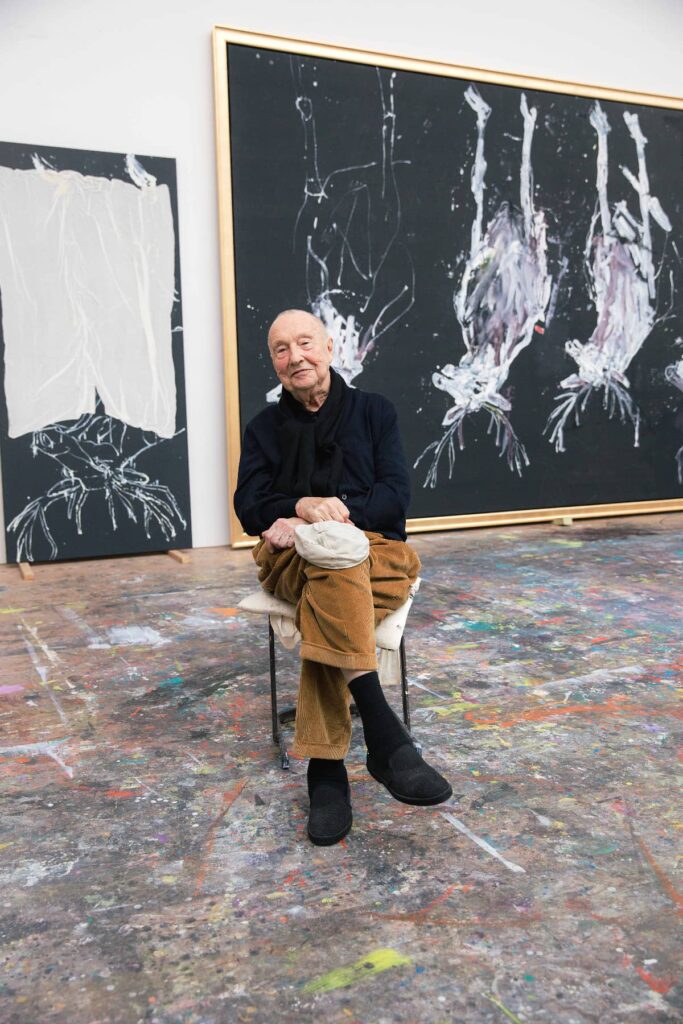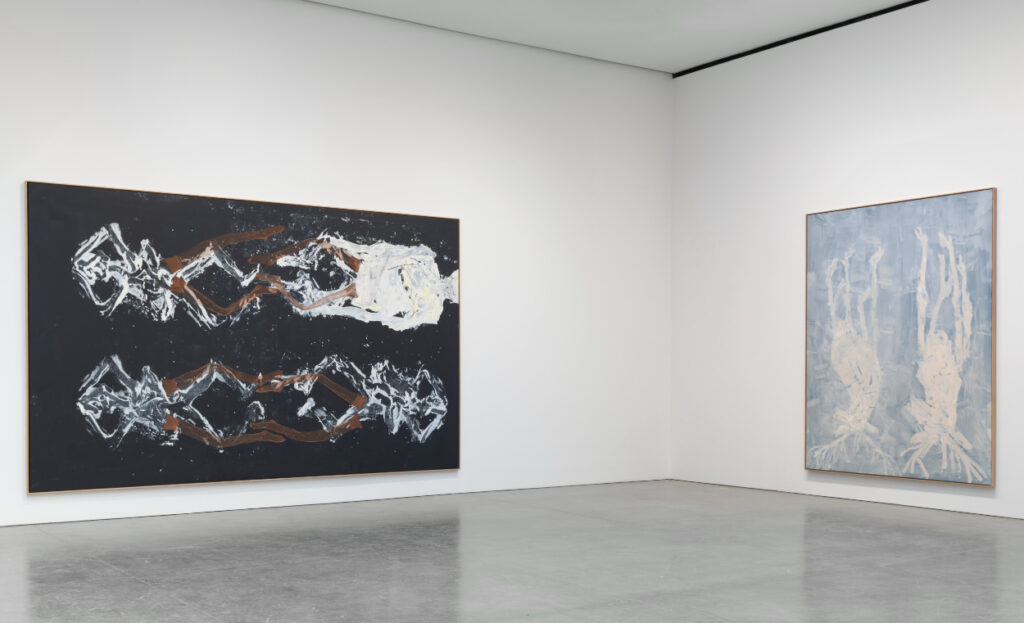Georg Baselitz, Whose Stock in Trade Is Raw Energy and Subversion, Has Mortality on His Mind
His work has necessarily been replete with unpleasantness, with all the harsh ironies and absurdities of collective folly.

Georg Baselitz, ‘The Painter in His Bed’
Through December 22, 2023
Gagosian, 555 West 24th Street, New York
Georg Baselitz has always been an iconoclast. Trained in social realism in East Germany, he was kicked out and came to West Berlin in 1957. He brought with him a talent for provocation and a deep-seated hatred of authority. His early career consisted of him driving a painterly bulldozer through the stiff academic proscriptions of Communism as well as the timid formulations of post war abstraction. One of his earliest paintings — a dwarf with a massive erection — sparked a moral panic.
Mr. Baselitz belongs to an extraordinary group of painters from an extraordinary time. Painting in post-war Germany with his many peers — among them, Anselm Kiefer and Gerhardt Richter — the focus was on a collective exorcism of the horrific excesses of Germany’s Nazi and Communist past. Mr. Baselitz’s work has necessarily been replete with unpleasantness, with all the harsh ironies and absurdities of collective folly.
The current show at Gagosian is no exception. The style is still pugilistic, and the ideas retain a high-octane crackle. Each painting is a vigorous puzzle to be decoded, a cerebral taunt. Raw energy and subversion are perhaps Mr. Baselitz’s stock in trade. He has been upending our ideas about painting for decades, and he continues to take pleasure in doing so.

Mortality seems to be on his mind in this show. Images of Stags, bursting with vigor and inverted in Mr. Baselitz’s signature style, hang beside roughly painted bodies lying in bed. Reminiscent of cave art, they lie on their backs or their sides, pieces of fabric glued above them.
Mr. Baselitz works in the interstitial spaces between perception, association, and memory. You are compelled to ask what sort of beds his figures are lying in. Are they devoted to leisure or pleasure, sickness or death? Are the pieces of fabric above them comforters or shrouds? The inverted stags, with their muscled necks and dagger-like antlers pointing downward, are affirmative and cruel reminders of the sheer vigor of nature, of life in its prime, contrasted again and again against recumbent bodies.
In one large canvas, we see two pairs of figures from an aerial view, with their legs splayed towards each other. Mr. Baselitz, who famously paints his figures upside down, has now added this novel view — the aerial perspective — to his bag of painterly tricks.
The effect makes the four figures resemble a Rorschach blot at a distance, or perhaps a blurry set of chromosomes. The aerial perspective is disconcerting, suggesting a suspended film camera, triggering feelings of surveillance, dissociation, and paranoia. The most complete figure, with a barrel chest and spindly legs, suggests the body of an old man.
It takes a moment to see that nylon stockings have been glued atop the legs of all four figures. The effect is grotesque. One thinks of suggestively clad skeletons, or perhaps the stocking-clad legs of an old man. Stockings appear elsewhere as well as a recurring motif, perhaps an echo of youth or referencing another skin-like layer that is shed, like the body at death. This is Mr. Baselitz’s signature dark humor, forcing the viewer to make jarring associations.

Mr. Baselitz’s deep love for varied color, a real strength of his painting in the past, has been abandoned in this show in favor of matte blacks, chalky whites, and hints of gray and rose. The only exceptions are several paintings where he combines the stag and stocking motif in bright scarlet.
The savage presence of his figures recall a neo-expressionist colleague that Mr. Baselitz greatly admires, A.R. Penck. Their cast-off, desiccated feel is enhanced by his use of Sgraffito, or the technique of smearing and scraping away of wet paint applied to a dried surface underneath. It also suggests the impression of painted skin applied directly to the surface.
At this late stage in his very long career, it seems fitting that Mr. Baselitz’s usually saturated palette has been so vigorously pared down. He has limited himself mostly to monochrome colors, to totemic figures, and applied pieces of fabric. His mind and eye are still very much alive, and his signature combination of German intellectual rigor and sardonic humor can be felt in every canvas. Whereas age generally signifies a softening or decline, this show suggests that Mr. Baselitz has merely scraped away the excess from his practice.
This is Mr. Baselitz in his dotage. Sinewy, grim, but still hale and combative.

